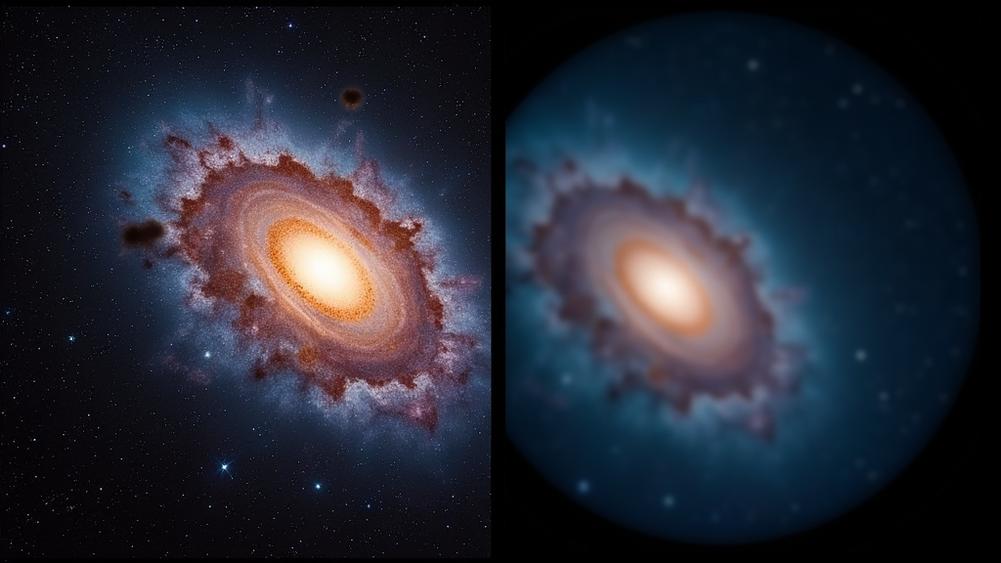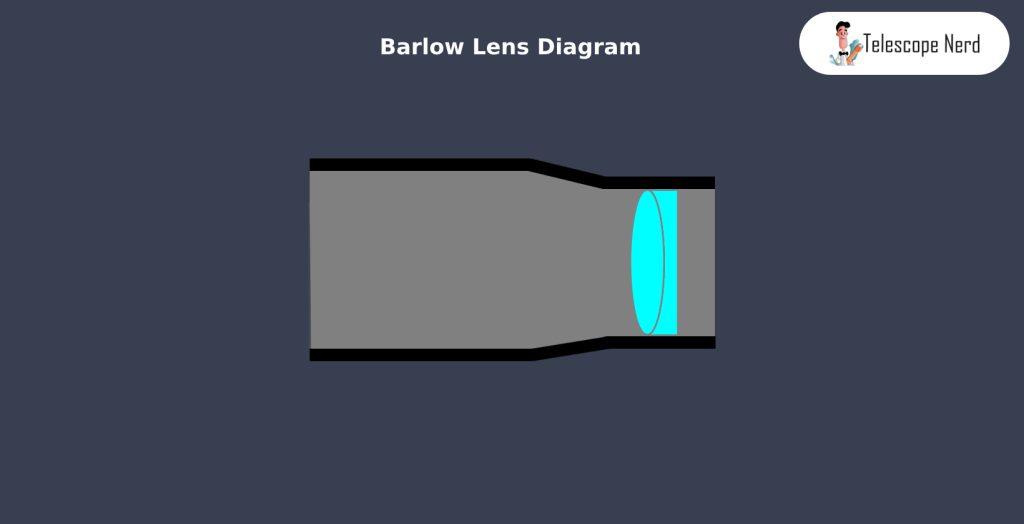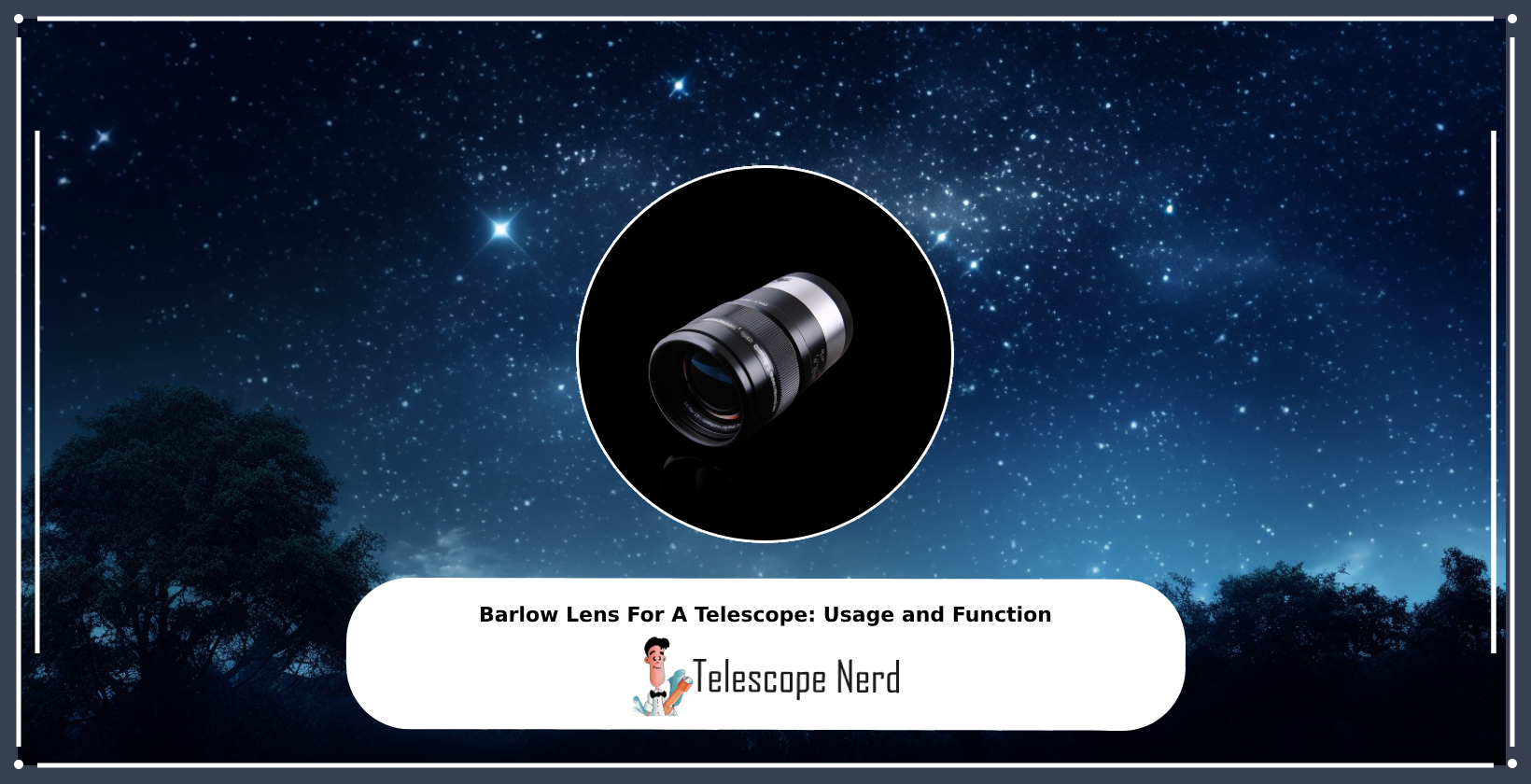Barlow Lens: Definition, How it Works, How to Use
Barlow lenses are diverging optical devices used to increase magnification in telescopes and microscopes. These negative lenses extend the effective focal length of optical systems, doubling or tripling magnification without replacing existing components. Barlow lenses are available in 2x or 3x magnification powers and come in achromatic or apochromatic versions. Common specifications include 10-30 mm focal lengths, 1.25 inch or 2 inch diameters, and weights of 100-200 grams.
Barlow lenses work by diverging light and reducing convergence in optical instruments. The lens shifts the focal point of a telescope, effectively extending the focuser and increasing magnification. Barlow lenses are placed before the focal plane of telescopes, connecting directly to the eyepiece. This configuration spreads out light rays in the optical path, allowing astronomers to achieve higher magnifications with existing eyepieces.
Using a Barlow lens involves selecting an appropriate magnification type and inserting it into the telescope’s focuser or diagonal. The eyepiece is then connected to the Barlow lens, and the image is focused by adjusting the telescope’s focuser. Proper handling and storage are essential to prevent damage to the lens.
Barlow lenses differ from eyepieces in several ways. Barlow lenses increase the effective focal length of telescopes, while eyepieces directly magnify images. Barlow lenses are placed between the focuser and eyepiece, while eyepieces attach directly to the focuser. Barlow lenses are considered optional accessories, while eyepieces are essential for viewing through a telescope.
What is a barlow lens?
Barlow lens is a diverging optical device used in optics. Barlow lens increases magnification of optical systems by extending effective focal length. Optical systems insert Barlow lens between objective lens and eyepiece. Barlow lens functions as a negative lens. Barlow lens provides higher magnification without replacing existing optical elements.
Barlow lenses are available in different powers, 2x or 3x magnification. A 2x Barlow lens doubles the magnification of any eyepiece. Observers choose Barlow lens types based on their specific telescope and desired magnification. Common Barlow lens types include achromatic and apochromatic versions. Achromatic Barlow lenses suit most astronomical applications. Apochromatic Barlow lenses offer superior optical quality for demanding observations.
Barlow lenses produce magnified images without changing eyepieces. Well-designed Barlow lenses minimize image quality degradation. Barlow lenses provide clear, high-contrast celestial images. Typical Barlow lens specifications include 10-30 mm focal lengths and 1.25 inch or 2 inch diameters. Barlow lenses weigh 100-200 grams. Astronomers use Barlow lenses for observing planets, stars, and deep-sky objects. Barlow lenses help reveal planetary details and resolve double stars.
What is a Barlow lens 3x?
Barlow lens 3x is an optical element used in telescopes. Barlow lens 3x trebles the magnification of eyepieces. Glass lens placed between eyepiece and telescope’s focuser increases magnification power. Eyepiece with 100x magnification becomes 300x with Barlow lens 3x. Barlow lens 3x enables observation of small details in celestial objects.

The Barlow lens 3x improves eyepiece sharpness by reducing chromatic aberration in telescopes. Eyepiece magnification is tripled without the need to change eyepieces, providing a cost-effective way to increase telescope power. The Barlow lens 3x is named after Peter Barlow, an English mathematician and astronomer who invented the concept. Visual astronomers commonly use the Barlow lens 3x as a standard tool to observe high-magnification objects in greater detail.
How does barlow lens work?
A Barlow lens diverges light in telescopes and microscopes. The lens increases the focal length of optical instruments by reducing light convergence. Barlow lenses shift the focal point of a telescope, effectively extending the focuser. This extension results in increased magnification of eyepieces, doubling the power.
Barlow lenses alter the optical characteristics of telescope systems. The lens changes the effective focal length of the optical system, allowing for higher magnifications. Most Barlow lenses double eyepiece magnification, providing a cost-effective way to increase observing power. Using a Barlow lens alters the field of view, reducing the apparent field while increasing magnification.
Astronomers place Barlow lenses before the focal plane of telescopes. The lens connects directly to the eyepiece, creating a powerful magnification multiplier. Barlow lenses have negative optical power, spreading out light rays in the optical path. This configuration allows astronomers to achieve higher magnifications with existing eyepieces, increasing the versatility of their telescope systems.

How to use barlow lens?
Selecting an appropriate Barlow lens for your telescope is crucial. Barlow lenses are available in different magnification types, 2x or 3x.
Inserting the Barlow lens requires careful handling. Place the Barlow lens into the telescope’s focuser or diagonal. Secure it firmly using the locking mechanism to prevent accidental drops or damage.
Connecting the eyepiece is the next step. Insert the eyepiece into the Barlow lens. Push it gently but securely to ensure a proper fit.
Using the Barlow lens increases magnification power by 2-3 times. Focus the image by adjusting the telescope’s focuser. Make necessary adjustments to achieve the desired view.
Removing the Barlow lens should be done carefully when finished observing. Pull it out gently from the focuser or diagonal. Store it properly to avoid damage.
Barlow lenses are optical accessories designed to enhance telescope magnification. Buy a Barlow lens compatible with your telescope’s aperture, focal length, and eyepieces. Connect the Barlow lens using provided adapters or threads if necessary.
How to install barlow lens in telescope?
Barlow lens installation requires careful preparation. Remove eyepiece from telescope focuser. Insert Barlow lens into focuser securely. Place eyepiece into Barlow lens. Tighten screws gently. Adjust focus for clear image. Solar observers must use proper solar filter. Barlow lens compatibility with eyepiece barrel size is essential for optimal performance.
The installation process begins by removing the existing eyepiece from the telescope’s focuser or diagonal. Unscrew the eyepiece carefully to avoid damage. Insert the Barlow lens into the focuser or diagonal, ensuring it is securely seated. Apply gentle pressure to properly position the Barlow lens. Secure the Barlow lens by tightening any thumbscrews or locking rings present on the focuser.
Place the eyepiece into the top of the Barlow lens, inserting it carefully to avoid misalignment. Tighten the eyepiece securely into the Barlow lens using the retaining ring or thumbscrew. Double-check all connections to ensure proper seating and alignment of both the Barlow lens and eyepiece.
Refocus the telescope after installing the Barlow lens, as it changes the optical path. The Barlow lens increases the telescope’s focal length, resulting in higher magnification. Apply the Barlow lens selectively based on viewing needs, as it works best for observing smaller celestial objects. Multiply the eyepiece’s magnification by the Barlow lens factor ( 2x or 3x) to determine the new magnification.
What is the difference between barlow lens and eyepiece?
Barlow lens increases effective focal length of telescopes, doubling magnification. Eyepieces directly magnify telescope images. Barlow lens works with existing eyepieces to amplify magnification. Eyepieces come in various focal lengths, determining magnification level. Barlow lens is placed between focuser and eyepiece. Eyepieces attach directly to focuser. Barlow lens maintains compatibility across telescope types.
Barlow lenses and eyepieces occupy different positions in the optical path. Telescope operators place a Barlow lens between the telescope and eyepiece. Telescope users position an eyepiece at the end of the optical path.
Barlow lenses and eyepieces affect telescope optics differently. A Barlow lens extends the focal length of a telescope. An eyepiece determines the field of view of a telescope.
Barlow lenses and eyepieces have distinct optical designs. Optical designers construct a Barlow lens as a negative lens. Optical manufacturers produce an eyepiece as a positive lens.
Barlow lenses and eyepieces differ in their necessity for telescope operation. Telescope users consider a Barlow lens an optional accessory. Astronomers deem an eyepiece essential for viewing through a telescope.

